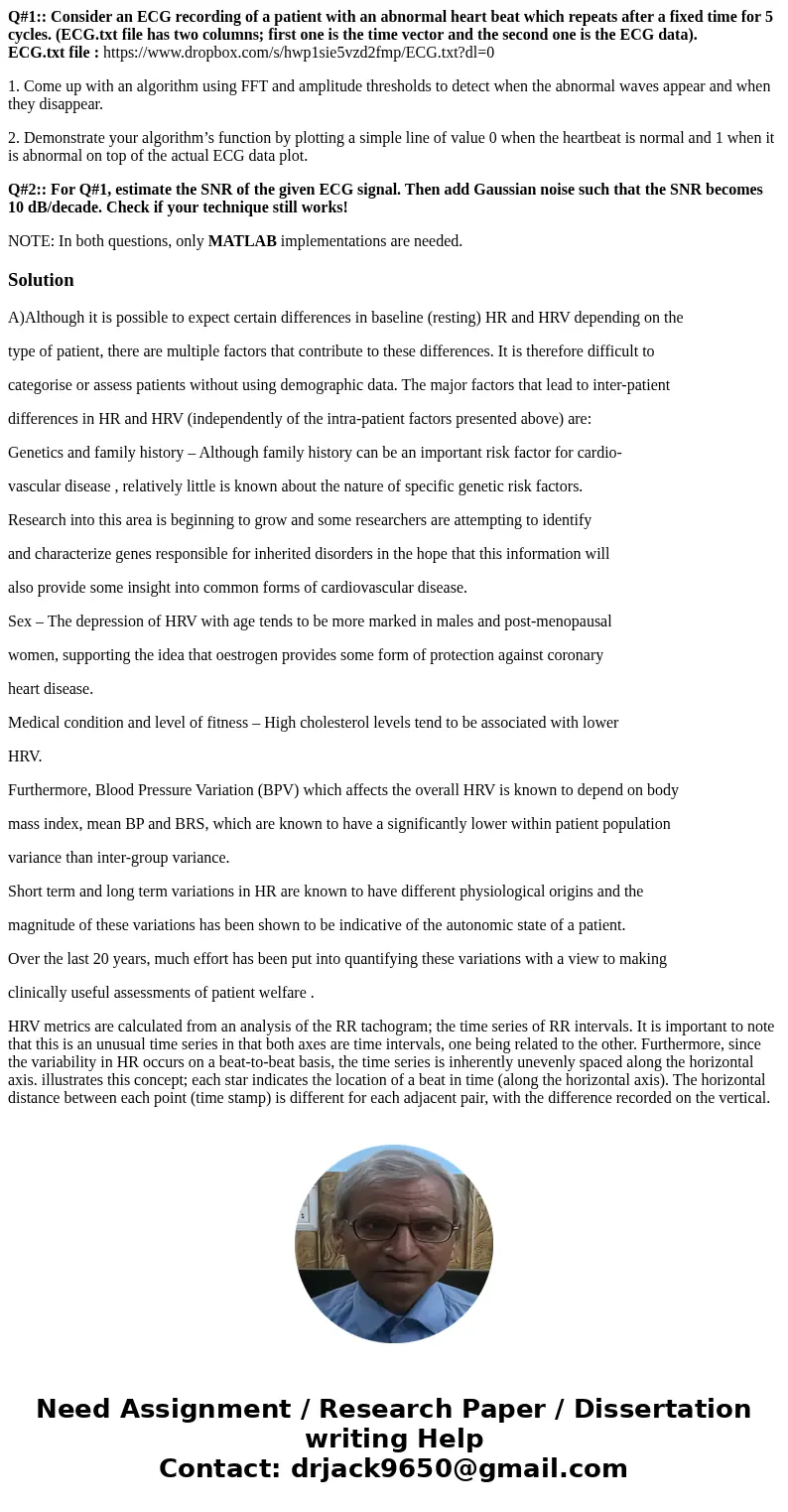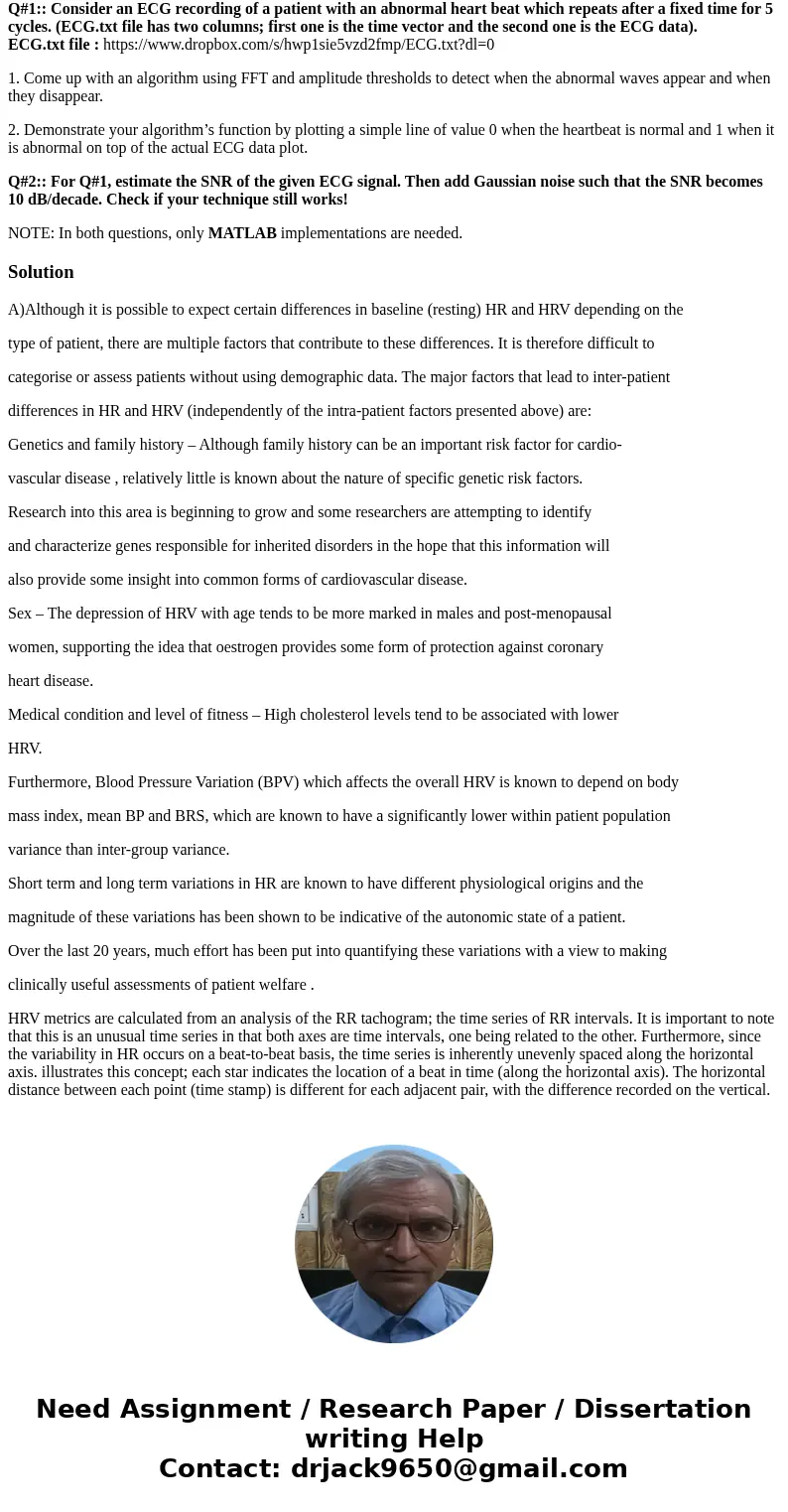Q1 Consider an ECG recording of a patient with an abnormal h
Q#1:: Consider an ECG recording of a patient with an abnormal heart beat which repeats after a fixed time for 5 cycles. (ECG.txt file has two columns; first one is the time vector and the second one is the ECG data).
ECG.txt file : https://www.dropbox.com/s/hwp1sie5vzd2fmp/ECG.txt?dl=0
1. Come up with an algorithm using FFT and amplitude thresholds to detect when the abnormal waves appear and when they disappear.
2. Demonstrate your algorithm’s function by plotting a simple line of value 0 when the heartbeat is normal and 1 when it is abnormal on top of the actual ECG data plot.
Q#2:: For Q#1, estimate the SNR of the given ECG signal. Then add Gaussian noise such that the SNR becomes 10 dB/decade. Check if your technique still works!
NOTE: In both questions, only MATLAB implementations are needed.
Solution
A)Although it is possible to expect certain differences in baseline (resting) HR and HRV depending on the
type of patient, there are multiple factors that contribute to these differences. It is therefore difficult to
categorise or assess patients without using demographic data. The major factors that lead to inter-patient
differences in HR and HRV (independently of the intra-patient factors presented above) are:
Genetics and family history – Although family history can be an important risk factor for cardio-
vascular disease , relatively little is known about the nature of specific genetic risk factors.
Research into this area is beginning to grow and some researchers are attempting to identify
and characterize genes responsible for inherited disorders in the hope that this information will
also provide some insight into common forms of cardiovascular disease.
Sex – The depression of HRV with age tends to be more marked in males and post-menopausal
women, supporting the idea that oestrogen provides some form of protection against coronary
heart disease.
Medical condition and level of fitness – High cholesterol levels tend to be associated with lower
HRV.
Furthermore, Blood Pressure Variation (BPV) which affects the overall HRV is known to depend on body
mass index, mean BP and BRS, which are known to have a significantly lower within patient population
variance than inter-group variance.
Short term and long term variations in HR are known to have different physiological origins and the
magnitude of these variations has been shown to be indicative of the autonomic state of a patient.
Over the last 20 years, much effort has been put into quantifying these variations with a view to making
clinically useful assessments of patient welfare .
HRV metrics are calculated from an analysis of the RR tachogram; the time series of RR intervals. It is important to note that this is an unusual time series in that both axes are time intervals, one being related to the other. Furthermore, since the variability in HR occurs on a beat-to-beat basis, the time series is inherently unevenly spaced along the horizontal axis. illustrates this concept; each star indicates the location of a beat in time (along the horizontal axis). The horizontal distance between each point (time stamp) is different for each adjacent pair, with the difference recorded on the vertical.


 Homework Sourse
Homework Sourse